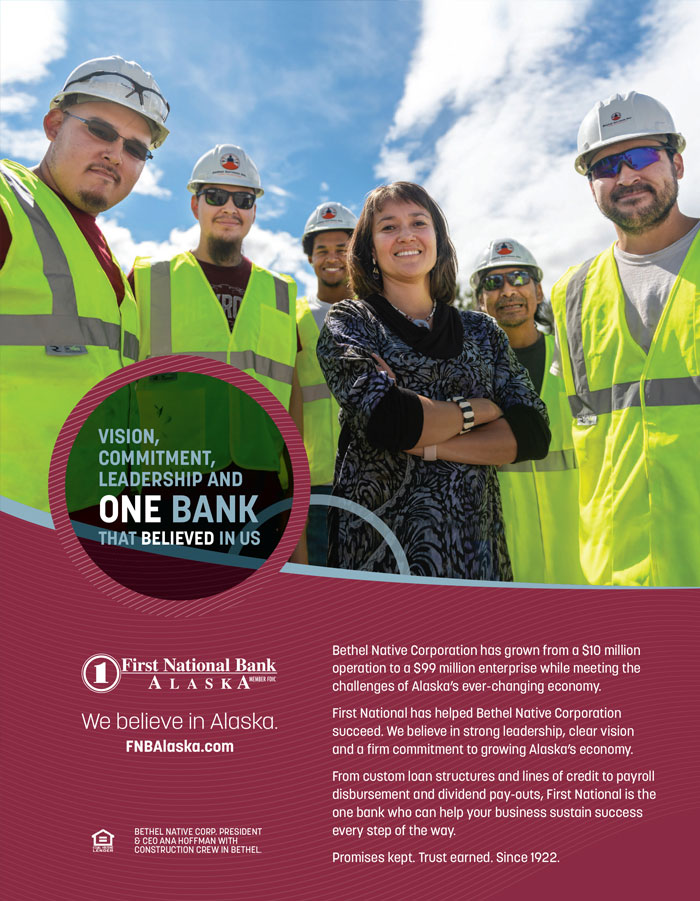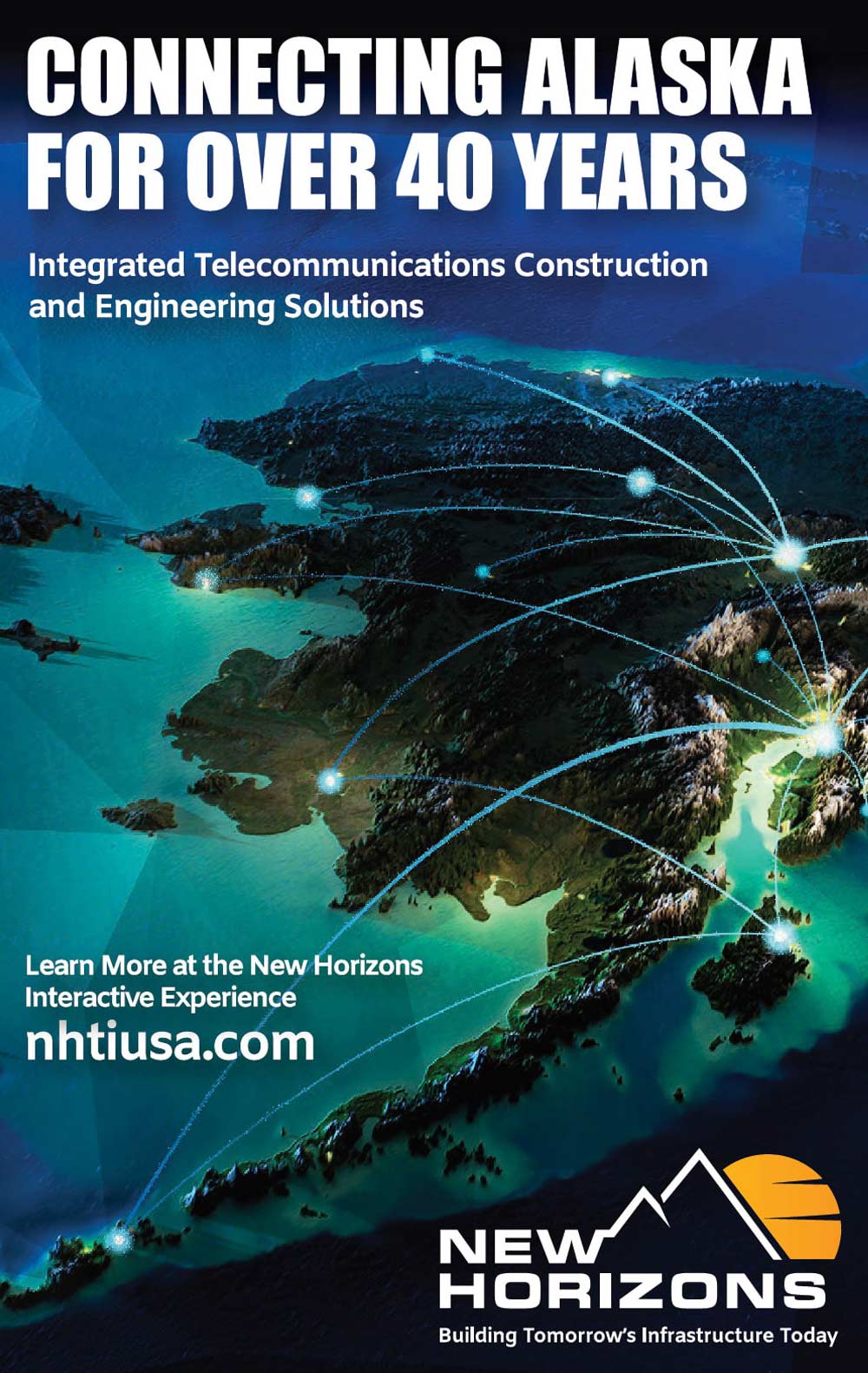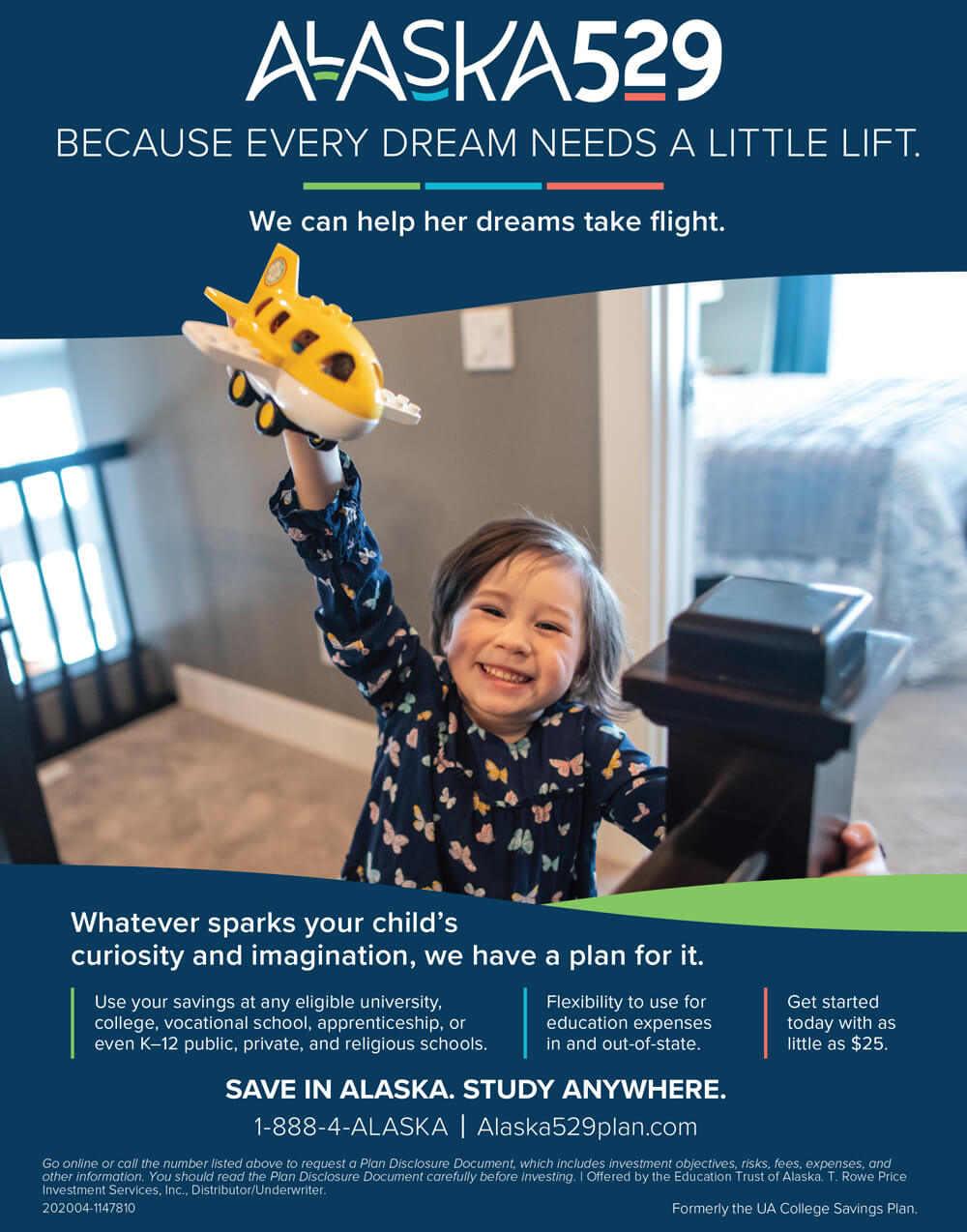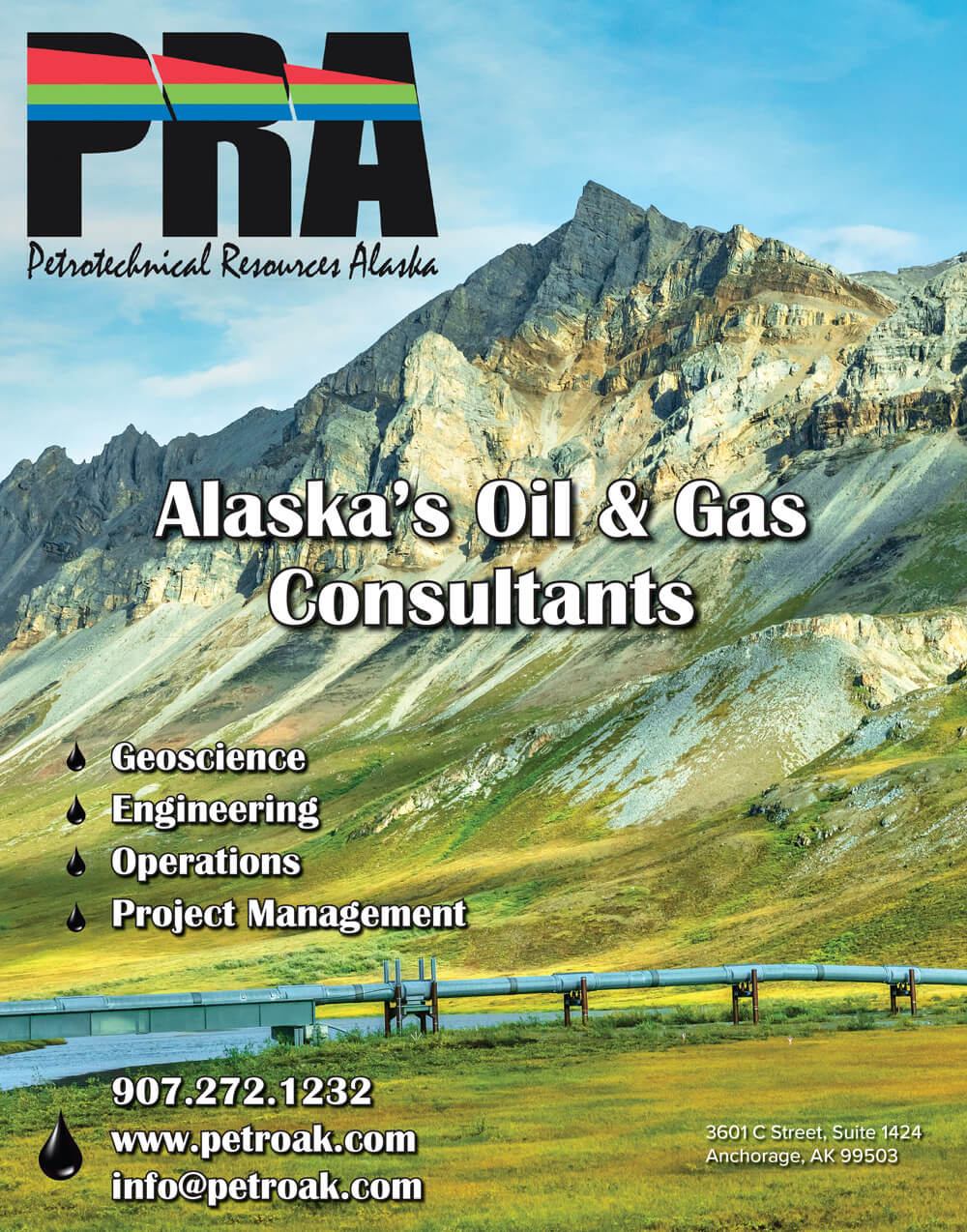Contents
Features
By Tracy Barbour
By Sam Friedman
By Amy Newman
By Bailey Berg
By Isaac Stone Simonelli
By Isaac Stone Simonelli
The Real Results of Real Estate
By Samantha Davenport
Immediate Aid for Long-Term Mental Health
By Isaac Stone Simonelli
Immediate Aid for Long-Term Mental Health
By Isaac Stone Simonelli

By Tracy Barbour
By Sam Friedman
By Amy Newman
By Bailey Berg
By Isaac Stone Simonelli
By Isaac Stone Simonell
The Real Results of Real Estate
By Samantha Davenport
About The Cover
“But your cover last July was fantastic! How can you have such amazing July covers year after year?” our readers ask. Easy! We reach out to local Alaskan artists and demand their best. This year, Annie Brace of Corso Graphics absolutely hit it out of the riverbed with this cover art that celebrates Alaska’s favorite businesses through Alaska’s favorite fish. Every company in our Best of Alaska Business special section is a catch—just like Brace, who reeled us in with her vibrant color choices and bold graphics. If you haven’t seen her work around the state (unlikely as that may be), check out Corso Graphics on Facebook—we promise you won’t be disappointed.
Cover by Annie Brace
About The Cover
“But your cover last July was fantastic! How can you have such amazing July covers year after year?” our readers ask. Easy! We reach out to local Alaskan artists and demand their best. This year, Annie Brace of Corso Graphics absolutely hit it out of the riverbed with this cover art that celebrates Alaska’s favorite businesses through Alaska’s favorite fish. Every company in our Best of Alaska Business special section is a catch—just like Brace, who reeled us in with her vibrant color choices and bold graphics. If you haven’t seen her work around the state (unlikely as that may be), check out Corso Graphics on Facebook—we promise you won’t be disappointed.
Cover by Annie Brace
Quick Reads

Kerry Tasker
Billie Martin
press@akbizmag.com
Postmaster:
Send address changes to
Alaska Business
501 W. Northern Lights Blvd. #100
Anchorage, AK 99503
From the Editor

riting this letter, this month, at this time in history is difficult. How do I write about whether we’re all enjoying the long, languid days of an Alaska summer at a time when the nation is engulfed in fear and anxiety? From COVID-19 to rioting in the streets, and news that, yes, we’ve officially entered a recession, it’s been a tough 2020 so far, and none of us knows what’s next.
Our stated mission at Alaska Business is to “promote economic growth in the state by providing a thorough and objective discussion and analysis of the issues and trends affecting Alaska’s business sector.

Regulations are changing constantly. For the most up-to-date information visit www.nac.aero.

Regulations are changing constantly. For the most up-to-date information visit www.nac.aero.

hen the COVID-19 pandemic made social distancing compulsory, many organizations were forced to implement programs to allow staff to work from home. They had little choice as the world responded to the health crisis by locking down and staying home.
For instance, Anchorage’s “hunker-down” order initially required non-critical businesses, such as hair salons, barber shops, clothing stores, gyms, and movie theaters, to close their premises and asked residents to stay home as much as possible. The restrictions have since eased, but all businesses—and people—are expected to follow physical distancing and other safety practices to the maximum extent possible.

the Curve


Joshua Lowman

Joshua Lowman
ife at the far end of the supply chain can be a challenge even during normal times, as anyone who has ever encountered wilted lettuce at the grocery store when a barge fails to arrive on time knows. It is particularly challenging during a pandemic when even major population centers struggled to acquire essential supplies.
But despite the challenges of geography and a global health crisis, Alaska performed well in a key pandemic response indicator this spring—the state’s ability to acquire and administer coronavirus tests.
n the wake of celebrating its 25th anniversary in 2019, the Alaska Mental Health Trust Authority has stepped in to provide $1.5 million in grants to organizations responding to the COVID-19 pandemic in the Last Frontier.
“We are concerned about the near- and long-term impacts of the pandemic on mental healthcare,” Alaska Mental Health Trust CEO Mike Abbott explains. “Providers that are doing the day-to-day work with our beneficiaries are in many cases struggling because they’re losing revenue, operational requirements are different and typically more expensive, and they are adapting to telemedicine where they might not have used that technology much before.”

Account Manager
here’s a difference between marketing and advertising, but it takes one to get to the other.
To survive in business, the goal is to turn consumers into buyers. It’s a fairly basic concept, but it’s a bit of a walk to go from producing goods and services to getting paid for them. Marketing and advertising lies somewhere in the middle of that marriage.


atanuska Brewing Company was on the path to experiencing record sales at the start of 2020. And then COVID-19 hit.
“It was probably the best January and February we’ve ever seen,” owner Matthew Tomter says. “Then we see Seattle shutting down, and we realized this was about to happen.”
The arrival of COVID-19 led to sweeping health mandates from state and local governments that resulted in closed doors at all businesses except those deemed essential in an attempt to “flatten the curve” of the virus.

elcome to the 5th Annual Best of Alaska Business awards. First and foremost, thank you to our readers who took the time to nominate the businesses that you see provide exceptional services to Alaskans. We publish the results, but you awarded these businesses with recognition for the hard work they do in their very varied fields.
To our winners: congratulations. While we review our survey process every year, year after year we’ve opted for a write-in process so that our readers can tell us what companies they value without us influencing their choices. You’ve earned these accolades, and we feel privileged to pass them along.

elcome to the 5th Annual Best of Alaska Business awards. First and foremost, thank you to our readers who took the time to nominate the businesses that you see provide exceptional services to Alaskans. We publish the results, but you awarded these businesses with recognition for the hard work they do in their very varied fields.
To our winners: congratulations. While we review our survey process every year, year after year we’ve opted for a write-in process so that our readers can tell us what companies they value without us influencing their choices. You’ve earned these accolades, and we feel privileged to pass them along.
irst come the shorebirds, congregating on the beaches of the Kenai Peninsula. Then come the king salmon, returning en masse to the rivers where they were spawned. Then—usually—come the tourists.
Last summer more than 2 million visitors were welcomed to the Land of the Midnight Sun. They toured and dined and experienced what makes Alaska what it is. And in doing so, they spent more than $2 billion. Oodles of companies (and entire towns) rely on a tourist presence. Like early homesteaders, businesses depend on summer’s bounty to make it through the winter.
This year has seen innumerable changes brought on by the COVID-19 pandemic, though one of the most profound has been a shift from life in a physical world to a digital one—across the globe businesses asked employees to work from home, schools went online, and shopping carts were found in the upper right-hand corner of customers’ screens.
This shift has challenged Alaska businesses that rely on tourism groups and independent travelers. Across the state, businesses in every industry have had to find creative revenue streams. Many decided to look for ways to add value to the lives of those already here; Alaskans helping Alaskans through uncertain times.

irst come the shorebirds, congregating on the beaches of the Kenai Peninsula. Then come the king salmon, returning en masse to the rivers where they were spawned. Then—usually—come the tourists.
Last summer more than 2 million visitors were welcomed to the Land of the Midnight Sun. They toured and dined and experienced what makes Alaska what it is. And in doing so, they spent more than $2 billion. Oodles of companies (and entire towns) rely on a tourist presence. Like early homesteaders, businesses depend on summer’s bounty to make it through the winter.
This year has seen innumerable changes brought on by the COVID-19 pandemic, though one of the most profound has been a shift from life in a physical world to a digital one—across the globe businesses asked employees to work from home, schools went online, and shopping carts were found in the upper right-hand corner of customers’ screens.
This shift has challenged Alaska businesses that rely on tourism groups and independent travelers. Across the state, businesses in every industry have had to find creative revenue streams. Many decided to look for ways to add value to the lives of those already here; Alaskans helping Alaskans through uncertain times.
rashing oil prices and banking investment policies that exclude many Arctic projects are changing the short-term and long-term landscape for development in the Arctic.
“Our Environmental and Social Risk Management framework and policies are a critical part of our due diligence requirements in sensitive industries such as oil and gas, mining, and consumer finance, and they help us identify, evaluate, and manage the environmental and social risks associated with our lending and investments,” Wells Fargo announced in a statement. “Wells Fargo does not directly finance oil and gas projects in the Arctic region, including the Arctic National Wildlife Refuge (ANWR)—part of a larger 2018 risk-based decision to forego participation in any project-specific transaction in the region.”

hy does a company invest billions of dollars in a remote and frigid place thousands of miles from market and connected to the rest of the world solely by air and a skinny 400-mile dirt road?
For ConocoPhillips, the answer is simple.
“We produce oil here because that’s where the oil is,” says Natalie Lowman, director of communications for ConocoPhillips, Alaska’s largest oil and gas producer.

esidential construction in Alaska runs on the same seasonal boom-and-bust cycle that dictates work in many sectors of the Last Frontier. Deep, cold winters can leave the dirt too hard and cold to break ground until May, resulting in short seasons for general contractors preparing to build new homes before winter sets in again.
“We have a really challenging building season with limits to the amount of time you’ve got to build a house,” Chad Wilson from Wilson & Wilson says. “We’ve got such a short window. I mean, one minute, there’s snow on the ground, the next it’s 80°F.”
he Alaska Native Claims Settlement Act granted Alaska Native corporations two significant assets: cash (in compensation for land lost) and land. With those assets, the Alaska Native regional, village, and urban corporations were tasked to provide for their shareholders—how they did so was left up to them. While the money was an immediate necessity, the majority of Alaska Native corporations have found enduring success through leveraging their lands, and for some that’s taken the form of real estate investment or services.
Alaska Native corporations have invested in a wide range of real estate-related lines of business—from tourism infrastructure and retail centers to real estate investment and management. Below is compiled, by region, a sampling of the many ways that Alaska Native corporations have invested to the benefit of their shareholders and their regions.
aedcweb.com
 391,274 barrels
391,274 barrels 12% change from previous month
12% change from previous monthSource: Alaska Department of Natural Resources
 $38.42 per barrel
$38.42 per barrel 194% change from previous month
194% change from previous monthSource: Alaska Department of Natural Resources
 339,863 Labor Force
339,863 Labor Force 12.9% Unemployment
12.9% UnemploymentSource: Alaska Department of Labor and Workforce Development
 Lindsey Atkins was promoted to Branch Manager of Northrim’s Jewel Lake branch. Atkins has nine years of experience in the financial industry, with five of those years spent at Northrim. Her education includes time at North Idaho College and UAA. Atkins also serves as an active volunteer in the Anchorage community.
Lindsey Atkins was promoted to Branch Manager of Northrim’s Jewel Lake branch. Atkins has nine years of experience in the financial industry, with five of those years spent at Northrim. Her education includes time at North Idaho College and UAA. Atkins also serves as an active volunteer in the Anchorage community.
 David Byrne has been named Commercial Loan Officer at Northrim’s Juneau Financial Center. Byrne comes to Northrim with twenty-one years of experience at financial institutions throughout Alaska. He holds a bachelor’s degree from UAA.
David Byrne has been named Commercial Loan Officer at Northrim’s Juneau Financial Center. Byrne comes to Northrim with twenty-one years of experience at financial institutions throughout Alaska. He holds a bachelor’s degree from UAA.
Alaska Trends
But Alaska’s willingness to do what was necessary and its diligence in holding the course was successful: our healthcare system has not been overrun, Alaskans in need of medical care were not abandoned, and we can now turn toward rebuilding our economy (which we’ve done before).
At a Glance
What book is currently on your nightstand?
The Great Alone by Kristin Hannah and I Know Why the Caged Bird Sings by Maya Angelou (a nightstand staple).
What movie do you recommend to everyone you know?
I’m not a big movie goer…. I’m not sure what I’d suggest as I usually fall asleep before the credits roll. Splash was my most favorite movie as a little girl, as well as Pippi Longstocking, but I’m not sure I’d necessarily “recommend” them.
What’s the first thing you do when you get home after a long day at work?
Because I work from a home studio, days don’t necessarily have a definitive start and stop time, I suppose. If I had to say something, I’d say I kickback with a cold one and indulge in some smutty brain drain TV, but who am I kidding—it doesn’t need to be a long day for me to do that!
If you couldn’t live in Alaska, what’s your dream locale?
I lived in Rome, Italy, for almost half a year during college, which I absolutely loved… I’d love to live in Rome again and really take advantage of all that is there. (Side note: While in Rome I lived on Via Del Corso, my company’s namesake.)
If you could domesticate a wild animal, what animal would it be?
My third kid. She’s always been a wild child bursting with creative, crazy, and chaotic ambitions (my husband affectionately calls her feral). But like most wild animals, she is a fascinating creature that brings so much excitement into our lives… couldn’t imagine life without her!
At a Glance
What book is currently on your nightstand?
The Great Alone by Kristin Hannah and I Know Why the Caged Bird Sings by Maya Angelou (a nightstand staple).
What movie do you recommend to everyone you know?
I’m not a big movie goer…. I’m not sure what I’d suggest as I usually fall asleep before the credits roll. Splash was my most favorite movie as a little girl, as well as Pippi Longstocking, but I’m not sure I’d necessarily “recommend” them.
What’s the first thing you do when you get home after a long day at work?
Because I work from a home studio, days don’t necessarily have a definitive start and stop time, I suppose. If I had to say something, I’d say I kickback with a cold one and indulge in some smutty brain drain TV, but who am I kidding—it doesn’t need to be a long day for me to do that!
If you couldn’t live in Alaska, what’s your dream locale?
I lived in Rome, Italy, for almost half a year during college, which I absolutely loved… I’d love to live in Rome again and really take advantage of all that is there. (Side note: While in Rome I lived on Via Del Corso, my company’s namesake.)
If you could domesticate a wild animal, what animal would it be?
My third kid. She’s always been a wild child bursting with creative, crazy, and chaotic ambitions (my husband affectionately calls her feral). But like most wild animals, she is a fascinating creature that brings so much excitement into our lives… couldn’t imagine life without her!
Off the Cuff
nnie Brace is the founder and owner of Corso Graphics, which specializes in graphic design, fine art, illustration, and “a splash of photography.” Brace is also the phenomenal artist of our cover this month; we reached out to her because we were drawn to her brilliant use of color, the high energy of her work, and how clearly Alaska inspires her.















































